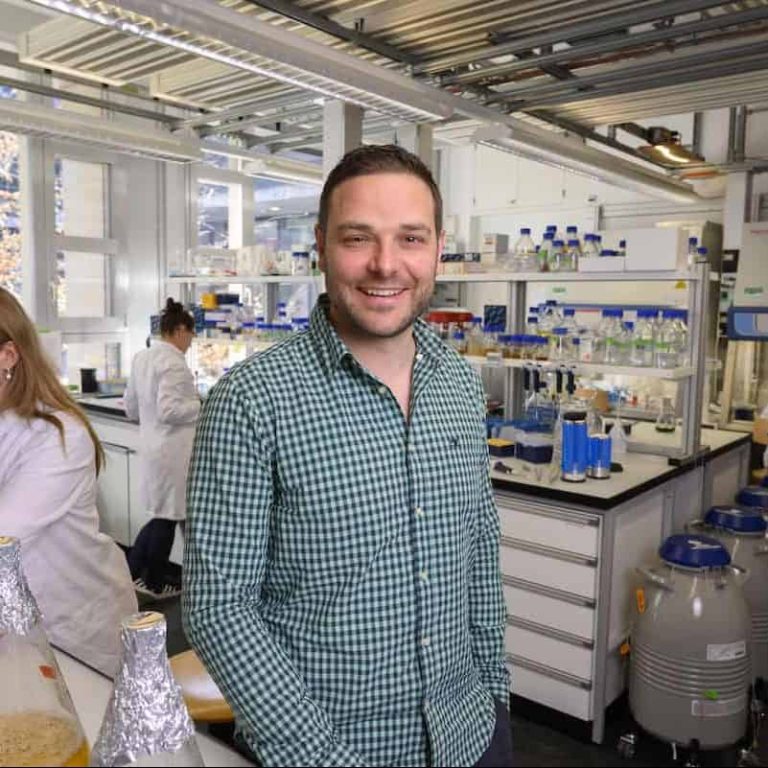Martin Pilhofer is Professor of Cryo-Electron Microscopy at ETH Zurich (Switzerland).
Born in Germany, Pilhofer studied biology at the University of Bayreuth (Germany) and at the Technical University of Munich (TUM; Germany). He completed his PhD in microbiology with Karl-Heinz Schleifer at the TUM. From 2008 to 2013, he joined Grant Jensen’s lab at the California Institute of Technology (Caltech)/Howard Hughes Medical Institute in Pasadena, US, as a postdoctoral researcher in structural cell biology. Pilhofer started an independent research laboratory at ETH Zurich as an assistant professor in 2014. He was awarded a European Research Council Staring Grant in 2016 and was selected as an EMBO Young Investigator in 2018. Pilhofer was promoted to full professor of cryo-electron microscopy in the Department of Biology in 2024.
Pilhofer’s research focuses on understanding bacterial cell–cell interactions across different scales of resolution. These interactions are often mediated by complex macromolecular machines. In an interdisciplinary approach, Pilhofer and his team apply the key technology cryo-electron tomography to image macromolecules in their cellular context while engaging in mediation of cell–cell interactions. The main interest is the architecture, function and evolution of bacterial contractile injection systems. Recently, the team began exploring cell–cell communication structures in multicellular organisms. The resulting biological insights advance the fundamental understanding of cell-cell interactions and could lead to innovative antibiotic and/or drug delivery strategies. While driven by biological questions, the lab is also engaged in the development of innovative cryo-electron microscopy methods, including the sample preparation by focused-ion beam milling. The new technologies are being applied in multiple collaborations investigating problems in infection biology, cellular biochemistry, structural biology, systems biology and health sciences.




